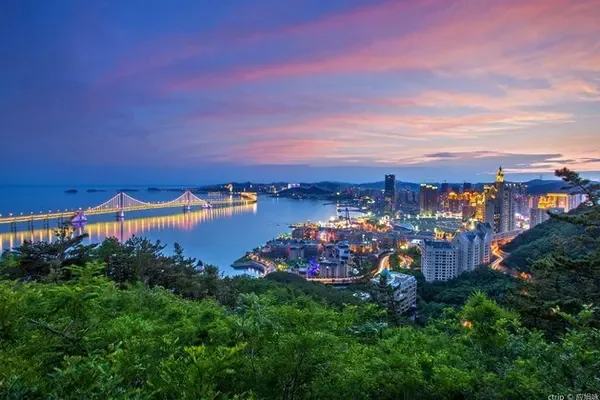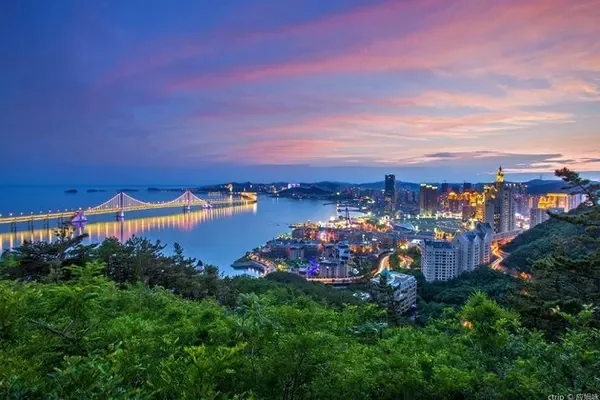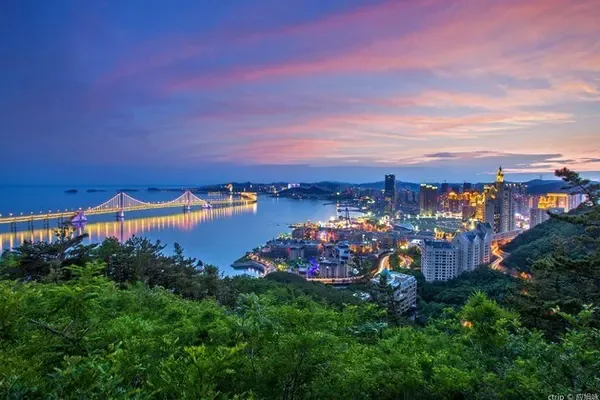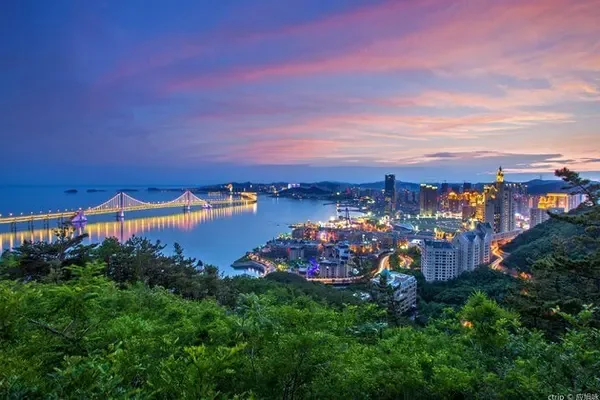The ancient city of Dingzhou is located 50 kilometers southwest of Baoding. It is famous for its long history and splendid culture. Since the Shang and Zhou Dynasties, Dingzhou has been the political, economic, military and cultural center of the north, leaving a rich cultural heritage for future generations.


During the Warring States period, between Yannan and Zhaobei, in the south-central part of Hebei Province today, there was a "Houguo" established by the Di people, Zhongshanguo. Zhongshan State was called Xianyu in the early days. The famous city of Xianyu began to appear in the historical records in the eighth year of King Zhou You (774 BC). In the fourth year of Lu Dinggong (506 BC), the name of Zhongshan began to be seen in historical records. At the beginning of the Zhongshan Kingdom, the capital was established in Zhongren (in today's Tang County), and Zhongshan City was established as the capital. Later, the capital was moved to Gu (in today's Dingzhou City). In the forty-first year of Marquis Wen of Wei (406 BC), Wei destroyed Zhongshan. Around 381 BC, Duke Huan of Zhongshan led the rest of the Xian Yu people to expel the ruler of Wei State, Zhongshan restored the state, and moved the capital to Lingshou. After that, its national power quickly reached its peak. In 323 BC, it became king at the same time as Zhao, Han, Wei, and Yan. In the third year of King Zhao Huiwen (296 BC), it was destroyed by the State of Zhao. It took 478 years from the earliest appearance of Xianyu in historical records to the final subjugation of Zhongshan, almost spanning the Spring and Autumn and Warring States periods.


The Dingzhou Ancient State Administration was the political arena where the local governors of the feudal dynasty governed and managed. It is a symbol of the state's highest status and greatest power. It carries the history of feudal imperial culture and reflects the crystallization of the hard work and wisdom of the ancestors of Dingzhou.
The overall architecture and decoration style of the Dingzhou Office almost restore the solemn and ancient appearance of the "Dingzhou Office", and reproduce the cultural characteristics of the ancient state office of the feudal monarchy. And use wax figures, reliefs, murals, and other forms to show the Dingzhou culture and the real allusions that happened in the Dingzhou government office in history, such as "Whipping the Supervising Post", "Cao Rui Xunzi", "The Sun and the Moon Don't Live", "The Sparrow Screen Selected ""Tang Taizong banquet in Zhongshan", "the largest rib factory in the prosperous Tang Dynasty", "coal burning sleeves" and so on.

Han Qi was a famous statesman in the Northern Song Dynasty. He served in the three dynasties of Renzong, Yingzong, and Shenzong. Caring for the government and loving the people, benefiting one side, won the support of the people, showing his scholar-official feelings of worrying about the country and the people.




Chongwen Street is a key commercial project of the Dingzhou government's restoration project of the State Department. It is also the first commercial pedestrian street in Dingzhou that completely imitates the Ming and Qing styles. It inherits the Zhongshan culture of Dingzhou. Organically combined to form an experiential shopping place integrating entertainment, leisure, shopping and tourism, it has become a cultural business card of Dingzhou, and strives to create a Dingzhou version of Qingming Riverside Picture.




Dingzhou Gongyuan (also known as Kaopeng) is the only well-preserved examination room for selecting scholars and tribute students in the feudal society in northern my country. In the third year of Qianlong in Qing Dynasty (AD 1738), Dingzhou Gongyuan was established by Zhou Muwang Danian to gather civil and military personnel in the jurisdiction Candidates take the exam, which is the place for the selection of scholars and tribute students. In the twelfth year of Daoguang (AD 1822), Wang Zhonghuai, the state herdsman, persuaded the people to donate to the people, expanded the site, rebuilt it, and added it, forming a large-scale examination room. It has been repaired and preserved until now, and was listed as a national key cultural relics protection unit in 2001.





Dingzhou Confucian Temple, also known as "Confucius Temple", was built in 848 AD (the second year of Tang Dazhong), and it is one of the state capital Confucian Temples with a long history in Hebei Province. Covering an area of more than 12,000 square meters, it is a Confucian temple complex with the largest scale and the most complete architectural pattern preserved in Hebei Province. The three adjacent courtyards in the east, west and middle are preserved, and the architectural layout is central axis. The main buildings in the east courtyard are the Chongsheng Temple and Kuixing Pavilion; the west courtyard is the Minglun Hall; the middle courtyard is the Dacheng Hall, Jimen Gate and Lingxing Gate. The Confucian Temple is a key cultural relic protection unit in Hebei Province. At the same time, there are Dongpo Shuanghuai, Huaibaochun, Luoxingshi and other scenic spots. Later, Dacheng Hall, Kuixing Pavilion, Lingxing Gate, Chongsheng Temple, etc. were restored, and many exhibition rooms that were about to collapse were renovated, stone inscription corridors were built, and cultural relics boutique exhibition rooms were built.




The Kaiyuan Temple Pagoda in Dingzhou is named after it was built in the Kaiyuan Temple. The Kaiyuan Temple has long been destroyed, and the only building in the temple is this tower. Kaiyuan Temple Tower was first built in the fourth year of Xianping (1001 AD) of Emperor Zhenzong of the Northern Song Dynasty, and completed in the second year of Zhihe (1055 AD) of Renzong Emperor of the Northern Song Dynasty. The reason for building this pagoda is to enshrine the Buddhist scriptures retrieved from Xizhu by Ling Neng, the great monk of Kaiyuan Temple; In the Northern Song Dynasty, Dingzhou was located at the border of the Song and Liao Dynasties and was the gateway of the country. There was a saying that "the eighteen roads in the world are the most important in Hebei, and the thirty-six states in Hebei are the most important in Dingzhou", so this tower is also called Anticipate the enemy tower. The tower is 83.7 meters high. It is the tallest existing brick tower in my country and the tallest building of the same structure in the world at the same time. Mr. Luo Zhewen, a famous expert on ancient architecture, praised it as "the first tower in China". Announced as the first batch of national key cultural relics protection units.
The Kaiyuan Temple Pagoda is composed of three parts: the tower base, the tower body, and the tower brake. The tower base is built of bricks and stones, in an octagonal shape. The body of the tower has 11 levels and is octagonal pavilion style, shrinking and decreasing step by step in proportion from bottom to top. There are doors in the four frontal directions outside the pagoda, with painted flame patterns on the doors, symbolizing the Buddhist holy scene of Buddha's light and incense, and blind windows in the four sides, with painted patterns on the blind windows. On the tenth and eleventh floors, doors are opened on the eight sides of the tower. On the outside of the pagoda, short eaves are made of bricks layered on each floor, and wind chimes are hung under the eaves, which can be used to frighten birds when the wind blows. A platform is formed on the eaves to look around the tower. The inner structure of the tower is that the outer tower body surrounds the inner tower body, and a corridor is formed between the inner and outer tower bodies, and tourists can visit the tower on the corridor. The top of the corridors on the first to seventh floors of the tower is a dougong flat chess-shaped roof, and the eighth to eleventh floors are arched roofs. The walkway goes from the inner tower body to the top of the tower body in a zigzag circle. There are one to six Buddhist niches on each floor of the tower body. Most of the niches are painted Buddha statues. Among them, the central Buddhist niche located in the center of the whole tower plane on the first floor is the largest and most distinctive. The dome rises high, like an umbrella and a cover", and the caisson is supported by bucket arches under the caisson. A tall standing Buddha was enshrined in the Central Plains of the altar, which was destroyed during the Cultural Revolution. The top of the pagoda is a green glazed roof with eight slopes and eight ridges, and a cast iron warrior stands on each ridge. Above it is the Tasha, 8.56 meters high, consisting of a brick-carved lotus petal base, an iron bowl with a waist and a lotus pattern, two copper orbs and a copper top."



Dingzhou South City Gate, also known as "Yingtai Gate", was built in the early years of Hongwu in the Ming Dynasty and has a history of more than 600 years. At that time, in order to strengthen the defense against the invasion of foreigners in the north, the governor of Dingzhou built the old city, demolished the temple, repaired the city wall, destroyed the temple bell, built weapons, and built a new city wall for 13 kilometers. Urn City, Moon City. Above the city gates, towers with double eaves were built as places to watch the enemy and command operations. The inner gate building is majestic and magnificent. The city is 12 meters high, the city tower is 8 meters high, and the city wall is 22 meters wide. It was repaired during the Wanli period of the Ming Dynasty, Kangxi period, Yongzheng period and Daoguang period of the Qing Dynasty. With the historical changes, only part of the city wall and three city gates remain.

Dingzhou Zhongshan Academy, also known as Zhongshan Temple School, was built on the basis of the Confucian Temple when Han Qi, Prime Minister of the Song Dynasty, served as Dingzhou Zhizhou in 1050 AD. It was once the place where Confucius taught. It is on the west side of Dingzhou Confucian Temple, and it is now Hebei Jizhong Vocational College.



